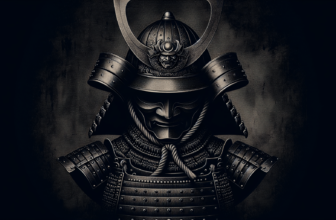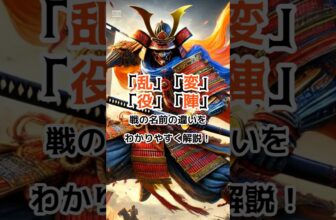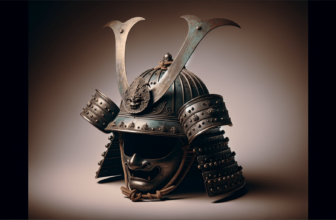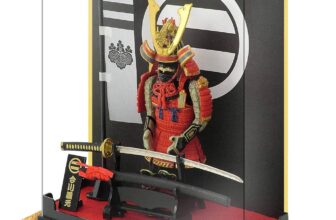
Get ready to explore the fascinating world of Japan’s Sengoku period, focusing on a unique piece of armor, the crescent moon helmet worn by Date Masamune. This striking helmet wasn’t just a fashion statement; it served a purpose that will surprise you. Crafted to intimidate enemies, it was so bulky that it was seldom worn in actual battles, showcasing the blend of artistry and strategic thinking in samurai culture.
Uncover the significance behind this iconic helmet and what it reveals about Date Masamune’s personality and leadership style. You’ll learn not only about the helmet’s imposing design but also how it reflects the intriguing history of the era and the people who shaped it. Join in as you discover a piece of history that highlights the intersection of power and appearance in warfare.
Overview of the Sengoku Period
The Sengoku period, also known as the “Warring States” era, was a tumultuous time in Japanese history that lasted roughly from the mid-15th century to the early 17th century. This era was marked by constant military conflict, political intrigue, and the struggle for power among various feudal lords. It laid the foundation for Japan’s eventual unification and the establishment of the Tokugawa shogunate.
Historical significance of the Sengoku era
The Sengoku period is significant not only for its military conflicts but also for the social and political changes that it brought. During this time, the concept of bushidō, or the “way of the warrior,” emerged, emphasizing loyalty and honor. This era saw the rise of samurai culture, which became a defining characteristic of Japanese identity. The widespread warfare forced lords to innovate in military tactics and logistics, marking a shift in how battles were fought and won.
Key figures during the Sengoku period
Prominent figures during the Sengoku period include Oda Nobunaga, Toyotomi Hideyoshi, and Tokugawa Ieyasu. Each of these leaders played a crucial role in shaping the political landscape of Japan. Oda Nobunaga began the process of unification, laying the groundwork for his successors. Hideyoshi built on this foundation, expanding control over the country before Ieyasu ultimately emerged victorious at the Battle of Sekigahara, leading to the establishment of the Tokugawa shogunate.
The socio-political landscape of Japan
The socio-political landscape during the Sengoku period was characterized by fragmentation. Various daimyo (feudal lords) exercised power over their territories, leading to a patchwork of alliances and enmities. Peasants often suffered due to the constant conflicts, resulting in social upheaval. However, this chaotic environment also fostered cultural advancements, including literature, arts, and the development of new religious movements, such as Protestant Buddhism.
Introduction to Date Masamune
One of the most iconic figures of the Sengoku period is Date Masamune, known for his distinctive appearance and formidable military strategies. Masamune’s rise to power is a captivating story that reflects not only his ambitions but also the spirit of the Sengoku era itself.
Biography and rise to power
Date Masamune was born in 1567 in the province of Mutsu. Despite being born into a family of samurai, Masamune faced significant challenges early in life, including losing his right eye due to smallpox. Rather than being deterred, he embraced his uniqueness and developed a reputation as a fierce warrior. By the time he was in his twenties, he had consolidated power in his region, expanding his influence and territory through a combination of military prowess and shrewd diplomacy.
Masamune’s role in the Sengoku period
As a prominent warlord, Masamune played a crucial role in the ongoing conflicts of the Sengoku period. He was known for his innovative tactics and ability to read the battlefield effectively. His ambitions were further showcased when he sought to establish trade relations with foreign nations, playing a significant role in Japan’s early interactions with the West.
Personal characteristics and leadership style
Masamune was renowned for his charisma, intelligence, and tenacity. He was not only a skilled warrior but also a calculated leader who valued alliances and diplomacy. Masamune’s distinct personality traits, such as his tenacity and strategic mind, made him a respected figure among his peers and a feared opponent on the battlefield. His fierce loyalty to his retainers and ambition to restore his family’s legacy were driving forces behind his actions.
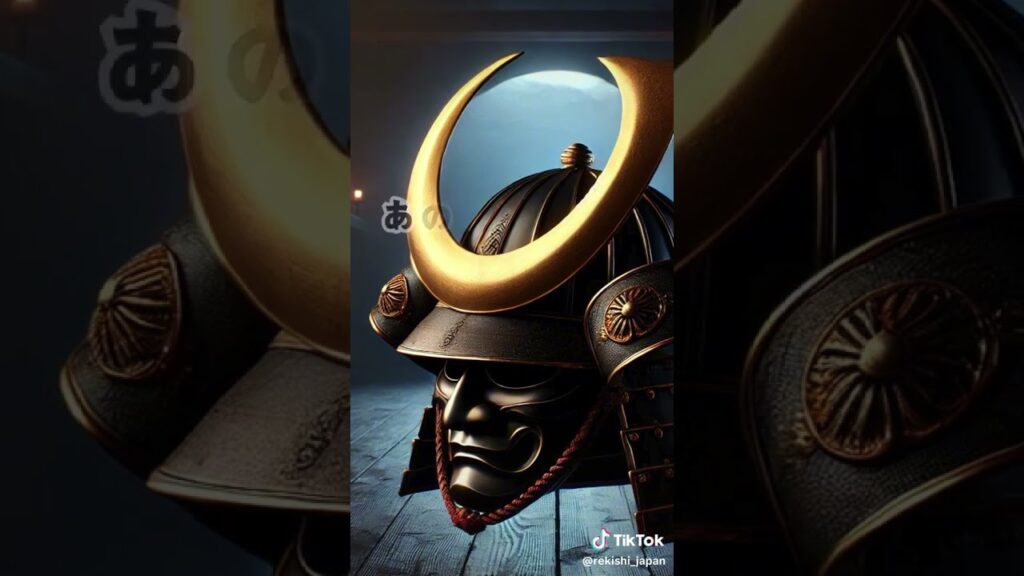
The Crescent Moon Helmet (Mikazuki Kabuto)
Among the many symbols of craftsmanship and power from the Sengoku period, the Mikazuki Kabuto (Crescent Moon Helmet) stands out as a remarkable piece of armor associated with Date Masamune.
Design and symbolism of the Mikazuki Kabuto
The Mikazuki Kabuto showcases a striking crescent moon design atop its helmet. This design is not just a visually stunning element; it served as a symbol of power and authority. The crescent moon represented aspirations for greater glory and territory, signifying Masamune’s ambition to unify Japan under his banner. The unique helmet elevated Masamune’s persona on the battlefield, making him an intimidating sight for his enemies.
Materials used in its construction
Crafted from high-quality iron and adorned with gold embellishments, the Mikazuki Kabuto exemplifies the expert metallurgy of the era. Artisans meticulously created each helmet by hand, ensuring that it was not only functional but also a work of art. The use of different materials added to its weight and significance, with the golden embellishments symbolizing wealth and status.
Cultural significance in Japanese armor
The Mikazuki Kabuto has transcended its practicality to become a cultural icon in Japan. It reflects the artistry of the samurai period and is an enduring symbol of honor and bravery. In the context of Japanese armor, this helmet is a reminder of the intricate relationship between aesthetics and functionality, showcasing the incredible skill of the artisans and the deep cultural roots of samurai values.
Purpose of the Mikazuki Kabuto
Understanding the purpose of the Mikazuki Kabuto is essential to appreciating its role in Masamune’s military strategies and its psychological impact on the battlefield.
Intimidation tactics in warfare
The imposing design of the Mikazuki Kabuto served an important purpose: to intimidate opponents. The sheer size and striking crescent shape would have made Masamune a formidable figure on the battlefield, instilling fear in his enemies. This psychological tactic aimed to demoralize adversaries even before a battle commenced, potentially giving Masamune’s forces an upper hand.
Psychological effects on opponents
Beyond its physical presence, the helmet contributed to Masamune’s reputation as a warrior who commanded respect and fear. Opponents might have second-guessed their confidence, considering the legend that surrounded him. This psychological edge played a significant role in warfare, wherein perception could be as potent a weapon as any blade or spear.
Strategic advantages in battle
Masamune’s use of the Mikazuki Kabuto also had practical benefits. While many helmets of the era were designed for protection and mobility, the crescent shape added an element that made it easier to deflect blows. The helmet’s design allowed for a broad view, enhancing situational awareness during combat. Thus, the Mikazuki Kabuto combined aesthetic appeal with functionality, embodying the principles of samurai warfare.
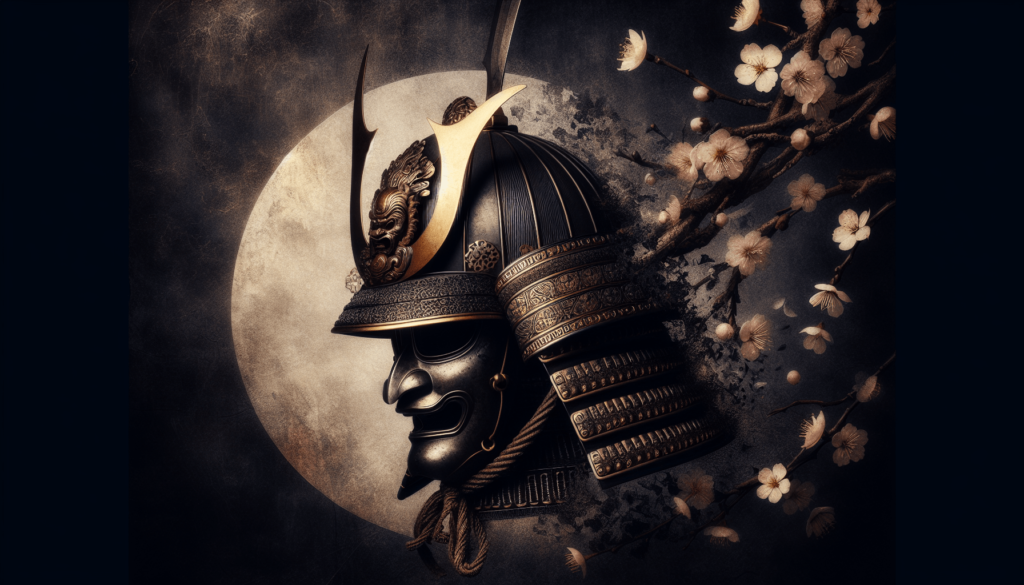
Construction and Weight of the Helmet
The construction and weight of the Mikazuki Kabuto are key to understanding its significance and practical usability, particularly in the context of the Sengoku period.
Methods of crafting the Mikazuki Kabuto
The Mikazuki Kabuto was created using traditional Japanese armor-making techniques, which often involved multiple stages of forging and assembling metal pieces. Artisans utilized a process called tatara, a form of iron-smelting, to produce tamahagane steel, renowned for its strength and resilience. These helmets were labor-intensive, taking considerable time and skill to craft.
Impact of weight on usability
While the Mikazuki Kabuto was impressive and intimidating, it also posed challenges regarding weight. The added embellishments and size meant that it was heavier than many of its contemporaries, which could affect a warrior’s mobility in battle. Thus, while its design showcased power and stature, it was not always practical for combat situations.
Comparison with other helmets of the era
When compared to other helmets of the Sengoku period, the Mikazuki Kabuto stands out as an exceptional piece. Most helmets were designed primarily for functionality and protection. In contrast, Masamune’s crescent moon design emphasized a blend of practicality and symbolism, illustrating the evolving nature of armor during this dynamic period in Japanese history.
Masamune’s Aesthetic Choices
Date Masamune’s aesthetic choices reveal much about his personality and the cultural influences of his time, especially in the context of his armor and the Mikazuki Kabuto.
Cultural influences on design
Masamune’s taste was shaped by the cultural influences of the time, including Zen Buddhism, which emphasized simplicity and natural beauty. He merged these philosophies with elements of warrior culture, producing armor that was not only functional but also elegantly crafted. His aesthetic choices reflected a desire for both beauty and might, encapsulating the essence of the samurai ethos.
Personal style and its reflection in armor
Masamune’s unique style extended beyond his armor to his overall persona. His famous one-eyed appearance became part of his legend, and the helmet only accentuated this. By combining traditional elements with his own flair, he created a recognizable image that resonated with both his followers and rivals. This distinct personal branding was pivotal in asserting his leadership and ambition.
Interpretation of power through aesthetics
The Mikazuki Kabuto stands as a prime example of how Masamune interpreted power through aesthetics. The intentional design choices not only conveyed his status as a samurai but also his aspirations for greatness. The intricate details sent a message that power could be both beautiful and intimidating, setting the tone for how samurai armor would influence Japanese culture for generations.
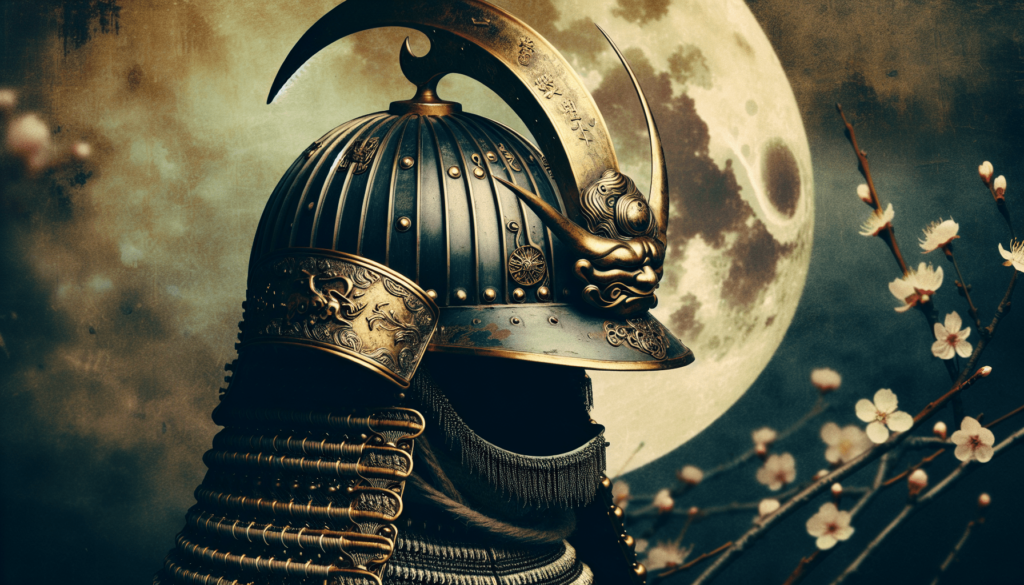
Influence on Future Generations
The impact of Date Masamune and his Mikazuki Kabuto extends well beyond the Sengoku period, influencing future generations and contemporary culture.
Legacy of Date Masamune’s helmet
The Mikazuki Kabuto has left an indelible mark on historical memory and has become a symbol of samurai heritage. Its design has inspired various representations in Japanese art, literature, and armor-making techniques. This legacy emphasizes the enduring appeal of Masamune as a cultural icon and a revered figure of Japanese history.
Impact on modern Japanese culture and design
Beyond its historical significance, the Mikazuki Kabuto has influenced modern Japanese culture and aesthetics. You can often see its design elements in various forms of art, including film, anime, and video games. These references keep Masamune’s legacy alive, showcasing how the past continues to resonate within contemporary society and popular culture.
Symbolism in contemporary martial arts
In many contemporary martial arts, the Mikazuki Kabuto embodies the ideal of the warrior’s spirit. It is not just an artifact; it symbolizes the honor, discipline, and commitment that martial artists strive for. The helmet serves as a source of inspiration, reminding practitioners of the rich history and cultural significance of those who came before them.
Masamune’s Military Strategies
Date Masamune’s military strategies were as nuanced as his aesthetics, combining innovative tactics with strong leadership during the Sengoku period.
Key battles and tactics employed
Masamune participated in several notable battles, employing strategies that emphasized mobility and surprise. His tactics often included flanking maneuvers and the use of terrain to his advantage, showcasing a deep understanding of battlefield dynamics. These tactics reflected a commitment to not just winning battles but also preserving his forces and resources.
Integration of technology in warfare
Masamune was also innovative in terms of technology, utilizing firearms and advanced weaponry that were relatively new to Japanese warfare at the time. This willingness to embrace new technologies allowed him to adapt and maintain a competitive edge over his rivals. His belief in integrating modern tactics and technologies into traditional samurai warfare reshaped the way battles were approached.
Collaboration with allies and betrayals
Throughout his campaigns, Masamune formed strategic alliances with other warlords, maximizing their combined strengths. However, the landscape of the Sengoku period was also fraught with betrayal, and Masamune navigated these treacherous waters with skill. His ability to forge and maintain alliances while remaining vigilant against potential threats showcased his political acumen in addition to his military prowess.
Cultural Representation of Date Masamune
Date Masamune has been the subject of various cultural representations, contributing to his mythos and the way he is perceived in modern times.
Masamune in literature and folklore
In Japanese literature and folklore, Masamune is often portrayed as a brilliant strategist and a formidable warrior. Stories and fables around him reflect not just his military successes but also his character. These tales have helped to immortalize him in the collective memory of Japan, as a symbol of honor and valor.
Modern portrayals in media
In contemporary media, Masamune’s character has been portrayed in various films, TV shows, and video games, often depicted as a charismatic and complex leader. These representations draw on the historical narrative while embellishing it with creative storytelling. Thus, he remains an enduring figure in pop culture, appealing to audiences globally and inspiring new interpretations of his life and legacy.
Public perception and myth-making
Through these portrayals, a mythos has emerged around Masamune, elevating him not only as a historical figure but as a cultural icon. This public perception is influenced by the blending of fact and fiction, contributing to a narrative that emphasizes his unique traits, such as his one-eyed visage, and his impressive military strategies. The myth-making surrounding Masamune illustrates how historical figures can become larger-than-life symbols, shaping collective identity and cultural heritage.
Conclusion
Date Masamune is a captivating figure from the Sengoku period, epitomizing the duality of war and peace, tradition and innovation. Through his unique style, including the iconic Mikazuki Kabuto, Masamune represents the complexities of Japanese history.
Summary of Masamune’s significance
His contributions to military strategy, along with his cultural influence, have solidified his place in the annals of Japanese history. Masamune not only embodied the spirit of a warrior but also exemplified the profound connection between aesthetics and power that defined the Sengoku period.
Final thoughts on the Mikazuki Kabuto’s role in history
The Mikazuki Kabuto is more than just a piece of armor; it is a symbol of ambition, innovation, and the enduring legacy of the samurai. As you explore the rich tapestry of Japanese history, it’s essential to appreciate how such artifacts embody the values and narratives of their time.
Reflection on the enduring legacy of the Sengoku period
The Sengoku period remains a pivotal chapter in Japanese history, influencing modern culture, martial practices, and national identity. As you consider the stories of figures like Date Masamune, remember that their legacies continue to inspire and resonate with those who seek to understand the complexities of honor, warfare, and leadership in a changing world.



